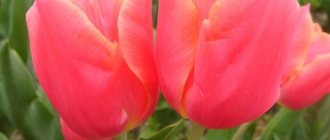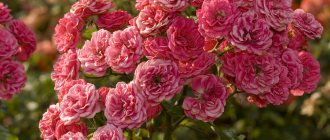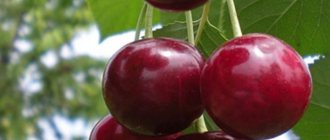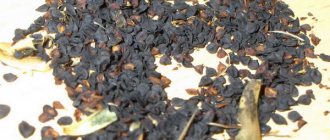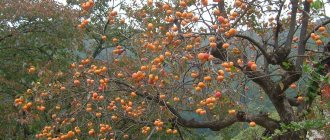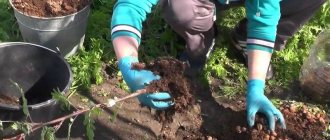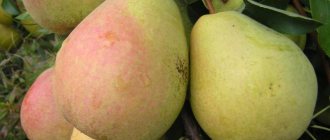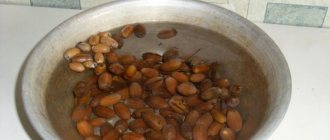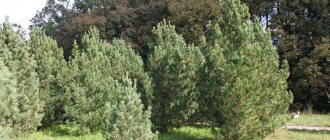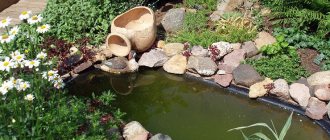Spruce propagation methods
Spruce can be propagated using standard methods for many crops:
- Seeds are the longest, most troublesome and labor-intensive method, and propagation by this method is not always successful. We are suitable for those gardeners who like to experiment and observe all stages of cultivation.
- Cuttings are a simpler and faster method than the first. Also, the technology is not financially expensive.
- Seedlings are the fastest, most convenient and easiest way to propagate spruce. However, it can also be called the most expensive, because you have to spend a little money on buying a good seedling.
When to plant spruce seedlings in open ground
You can plant spruce in open ground both in spring and autumn. However, the most suitable time is still spring. It is advisable to choose the timing of the procedure before the beginning of the growing season, in particular sap flow. But at the same time, the ground should have completely thawed after the winter frosts. That is, approximately the end of March, April.
Note! In fact, a spruce seedling with a closed root system can be planted in late spring (late April, May) and summer. Only in such cases will it be necessary to shade the tree for the first time after planting, and also be meticulous about regular watering. However, it is not recommended to plant in summer during a particularly hot and dry period; the seedling will take a long time to take root.
When to replant
Spruce trees should be replanted every 2 years. Optimal period: end of April – beginning of May. Depending on the chosen variety, after 5 years of keeping it at home, it will be possible to plant a Christmas tree in the garden. The main thing is to familiarize yourself in detail with the features of a particular type.
Did you know? The name “spruce” came to us from the Turks. Translated from their language, the word means “road” - in ancient times it was believed that the top of a tree pointed the way to heaven, that is, to another life after death.
Growing a spruce at home is not such a difficult task as it might seem at first glance. Thanks to breeding work, a sufficient number of species have been bred that take root well in apartments. Such a purchase will also help preserve wildlife from merciless deforestation during the New Year.
How to choose a good spruce seedling
Seedlings of many crops are sold both with a closed root system (the roots are in a container with soil) and with an open one (that is, the roots are bare, they are not placed in a container with soil). So, a spruce seedling should exclusively have a closed root system (an example of such a seedling is in the photo below).
The fact is that the roots of all coniferous crops cannot tolerate drying out of the roots, so before planting they must be in the ground and regularly moistened without drying out.
Also, the seedling must be healthy, without signs of mechanical damage or fungal diseases, and the needles must have a normal needle color for its variety. You should not buy a seedling with dried, broken shoots or dried out needles.
Remember! Overdried spruce roots die quickly; the roots should not be allowed to be exposed to air!
Where to plant a spruce on the site: choose a place in the country
Choosing the right and most suitable place is a very important stage in preparing for planting a seedling.
This crop has special requirements for lighting: the spruce must be properly illuminated, but not stand under the scorching rays of the sun (especially at the peak of solar activity, that is, at noon). Light partial shade works well. It is not recommended to plant it in deep shade or under too hot, midday light.
The most suitable soil for growing spruce in open ground: light, loose . Light loams are ideal.
This crop does not tolerate stagnation of water in the soil , so you should not choose places with groundwater close to the surface of the earth, lowlands in which moisture accumulates. If such phenomena are present in your garden, then you should definitely do drainage!
When choosing a place to plant spruce in the garden, it is very important to focus on the future size of the tree. If you bought seedlings of small conifers, then you can plant them wherever your heart desires, even next to the house. But it is not recommended to plant large spruce trees close to the house or other fruit/ornamental trees in the yard; the optimal distance between them is 10-15 meters.
With a small distance between the building and the tree, the spruce root system will destroy the foundation of the building as it grows.
In close proximity to other trees, the spruce root system will grow and absorb all the moisture from the soil, depriving its neighbors.
Small-sized spruce trees look very beautiful in a rock garden, on an alpine hill, next to an artificial pond.
Landing
The process of planting any tree is based on several sequential actions, each of which has its own important features. First of all, you should take a responsible approach to choosing planting material, a place to place a coniferous plant and choosing the timing of planting, not to mention the step-by-step procedure itself. Before moving on to practical actions, it is worth studying their theoretical nuances.
Did you know? After the death of an old spruce, new trees grow from its roots, which are a complete copy of the dead mother plant. There is one such specimen growing in Sweden, the age of which, according to some estimates, is about 9.5 thousand years.
Selection of seedlings
A blue spruce seedling suitable for planting usually reaches 70 cm in height by three or five years of cultivation, has a well-developed root system and dense, strong shoots. The needles on young plants should be uniform in color, without signs of yellowing or drying out of individual parts. The trunk may be slightly curved, but as the tree grows it will soon straighten out.
If possible, it is better to buy young spruce in closed soil, which will subsequently ensure rapid establishment of the plant in a new place. If you decide to dig up a seedling in the forest, then collect several buckets of earth from the place where it grew. In the future, you will need to fill the planting hole with this soil, mixing it with other fertilizers for conifers.
Choosing a landing site
The ideal planting location for blue spruce would be a well-lit private area of the territory, with minimal exposure to direct sunlight on the needles. Considering the rapid growth of the spruce root system, it is important that it be very spacious, without close neighbors. As a last resort, at a distance of 2–4 m from the trunk, growth limiters can be installed in the form of a strip foundation.
Important! The sun's rays will be especially dangerous for young needles in the first three years of growing the plant. In the future, you can take your time to protect the seedling from exposure to the sun.
In addition, taking into account the large size of an adult tree (it will also grow in width), you should not plant it closer than 20 m from the house , otherwise there is a possibility of undesirable effects of long roots on the foundation of the structure (in some cases it leads to to the appearance of cracks inside the house).
When they plant
Many gardeners believe that the best time for planting spruce is the end of winter, but for the northern regions this option is not suitable, since the ground at this time is still very frozen and difficult to dig. The optimal solution would be to plant a coniferous tree in April , both for residents of the northern regions and citizens of central Russia, when the frosts begin to recede and the ground thaws.
Landing rules
In addition to choosing the right seedling and performing planting measures, there are several other small recommendations for growing a strong tree that will quickly take root in a new place.
Did you know? Felling (severing from the root) blue spruce trees or other varieties of this tree is considered a criminal offense and can be punishable by a fine of up to 1.5 million rubles or forced correctional labor for a period of 4 years, with an additional mandatory payment to the state of 150,000–300,000 rubles . In particularly difficult cases, a person faces imprisonment, which is also regulated by Art. 260 of the Criminal Code of the Russian Federation.
The most popular tips include the following:
- An adult blue spruce has a superficial rhizome, which means it will take moisture from other plants growing nearby. To prevent this from happening, you will have to plant it either outside the perimeter of the site, or organize regular, abundant watering.
- To ensure quick establishment of a seedling in a new place, when replanting it, pay attention to the cardinal directions, trying to place it in accordance with the coordinates in its natural growth environment.
- Since a mature spruce is a fairly large plant, when planting it next to a fence, talk to your neighbors and make sure that they do not mind its shade.
- The optimal fertilizer before planting spruce would be 100–150 g of nitroammophoska per planting hole.
- The roots of the plant do not tolerate open air space, so to prevent them from drying out, you need to try to keep them out of the ground as little as possible (in extreme cases, the rhizome is wrapped in a damp cloth).
- And finally, remember that you can’t dig up trees anywhere you want. To avoid possible troubles, it is better to purchase seedlings from specialized nurseries rather than obtain them in protected areas.
Video: how to plant a blue spruce
Step-by-step instruction
When placing a spruce tree in the garden, the planting process consists of several important stages:
- To begin with, two weeks before the intended planting, dig a planting hole in the selected location, the depth and width of which will be approximately 25 cm larger than the earthen ball of the selected seedling (on average, the parameters of the hole will correspond to 60x60 cm).
- Then place a five-centimeter layer of broken brick drainage on the bottom and fill the hill with a nutritious soil mixture (you can mix 50% of the top layer of local soil, 30% of neutralized peat and 10% each of sand and humus).
- Treat the rhizome of the seedling with a clay mash and after it dries, move the plant into the hole, carefully leveling all the roots.
- Cover the rhizome with the remaining soil, compact it slightly and water the plant well.
- Drive a wooden peg next to the seedling and tie the trunk to it.
- Cover the tree trunk area with sawdust or mulch with peat, which will help maintain an optimal level of moisture in the root system.
At this point, the planting of the spruce can be considered complete and all that remains is to organize the tree’s proper further care.
How to prepare a planting hole for planting spruce
After you have chosen a location, you need to prepare a planting hole for spring planting of spruce.
When digging holes, keep in mind that the distance between tall spruce trees is about 3-5 meters.
If you are interested in a hedge, then it is optimal to keep a gap of about 1-2 meters.
The size of the hole should be determined by the size of the seedling. That is, the hole should be twice the size of the seedling’s earthen ball (for example, if the width and height of the ball are about 40 cm, then the pit should be 80 by 80 cm).
Important! If the soil in your garden is clayey, heavy, or the groundwater is too high, it is recommended to place a drainage layer (20 cm thick) at the bottom of the hole. Broken brick, crushed stone, and coarse expanded clay can be used as drainage material.
The next step in preparing to plant a spruce is to fill the planting hole with a nutritious soil mixture, which will have a beneficial effect on the future growth of the tree. A dressing made from the following ingredients works very well:
- leaf soil (2 parts);
- turf land (2 parts);
- peat (1 part);
- sand (1 part).
It is advisable to add mineral fertilizers to the soil mixture. Complex fertilizer Nitroammofoska is excellent (approximately 100-150 grams will be enough). Mix the granules thoroughly with the primer.
If you do not have the opportunity to prepare a soil mixture according to the recipe described above, then you can simply take soil from the top fertile layer of the earth, add Nitroammofoska from it (and, if possible, sand, peat).
Instructions for planting spruce seedlings in open ground: rules and diagram
Planting a spruce seedling with a closed root system is very easy; you do not need to perform any very complex actions. The following step-by-step diagram will help you plant a spruce tree in open ground correctly in the spring:
- Carry out the preparation described above: select a site, prepare a hole, lay drainage if necessary, fill it with a special mixture.
- You should carefully remove the seedling from the container; when removing it, you must not damage the earthen ball or the above-ground part. To do this, place the container on its side, gently tap the container and remove the seedling.
- Place the spruce seedling in the planting hole; the root collar should be 3-5 cm above the surface of the earth. Do not bury it! If you put it in a hole and see that the seedling is sitting too deep, then you should lift the seedling and add it to the bottom of the soil.
- Then you need to fill the voids of the pit with nutrient soil.
- After this, you need to carefully compact the soil into the tree trunk soil.
- After planting, water generously. At this stage, you should not skimp on water. You need to pour about 3-4 buckets under one seedling, and you need to pour in gradually, wait until the water is absorbed, and then pour in the next bucket.
Important! If, some time after planting, you see that the soil in the tree trunk circle has settled, then be sure to fill it up to the previous level and water again.
The most balanced complexes
When choosing medications for conifers, you should give preference to products from proven and well-established manufacturers.
- Fertilizer "Khvoinka" is a complex product that stimulates the rapid growth and harmonious development of coniferous plants. The composition includes all important micro- and macroelements in an optimal ratio. Fertilizing is carried out with a solution prepared from 10 g of the drug and a bucket of water (per 1 sq. m of tree trunk circle). The product contains a fairly large amount of nitrogen (13%), so it is usually applied in spring or summer.
- Fertilizer for conifers “Fertile universal” is a preparation for comprehensive care of evergreen trees. Suitable for both basic application (at the planting stage) and for fertilizing during the phases of active growth and development of plants. Before planting, the drug is applied to the soil in an amount of 100-200 g per plant. For feeding during the growing season, 20-30 g of the substance are diluted in a bucket of water per 1 plant.
- Fertika Lux fertilizer is a mineral preparation specially designed for additional nutrition of conifers. The product is enriched with magnesium, which ensures health and rich color of pine needles. To fertilize the Christmas tree, dilute 20 g of the product in a bucket of water, and the resulting solution is used for 1 tree.
- Fertilizer “Zdraven turbo for conifers” is a mineral preparation for healthy growth and proper development of conifers. The product has a high nitrogen content (22%), so it is used for feeding spruce and blue spruce, pine and other similar crops in spring or summer. Fertilizer is applied under trees in the form of a solution prepared from 15-20 g of the product and 10 liters of water (per 1 plant).
- The drug "Aquarin" is a complex product for feeding coniferous plants with a minimum nitrogen content. This fertilizer can be applied throughout the growing season as needed. The trees are fed with a solution of 15-20 g of the product diluted in a bucket of clean water (for 1 plant).
- “Green Needle” is a mineral preparation with a high content of magnesium. It is used in the complex care of coniferous plants in order to improve their decorative qualities, as well as to prevent changes in the color of needles that develop due to lack of nutrition. It is applied twice during the growing season (in spring and autumn) by spreading it under trees and then incorporating it into the soil. The dosage of the drug is determined by the height of the plant (from 50 g for a tree below 4 m and up to 250 g for a tree above 8 m).
- Fertilizer for conifers "MicroMix" is a preparation with a specially selected composition that can fully meet the needs of conifers for basic chemical elements. Due to the low nitrogen content, fertilizing with this product can be carried out throughout the entire growing season (from spring to autumn). Trees are fertilized with a solution prepared from 15-20 g of the drug and 10 liters of water (per 1 m2 of tree trunk circle).
What to do with a spruce seedling after planting: care rules
In the first year, it is necessary to especially carefully care for the young seedling in the open ground. Careful care will help you take root and adapt normally to a new place without unnecessary stress. It is very important to carry out the following care measures:
- If you planted a small seedling in open ground, it is recommended to tie it to a support . To do this, install a supporting wooden peg next to a small tree. And tie the tree by the trunk with twine.
- After planting, it is recommended to mulch the area around the tree trunk; mulch will retain moisture in the soil longer. Peat and compost can be used as mulch; 6 centimeters is enough. It is also very important to mulch the tree trunk in late autumn to protect the young root system from winter frosts.
Important! Whenever mulching, the mulch should not touch the trunk.
- For the first few months (or even the first year), it is recommended to shade the tree. To do this, you can pull an awning on the sunniest side. If the light is too bright after planting, the young tree may burn.
- Spruce is relatively demanding on soil moisture, so it needs to be watered regularly. This is especially important in the first time after planting, and especially in hot and dry weather. It is necessary to consistently maintain moderate soil moisture. It is advisable to carry out this care procedure in the morning or evening. In this case, water must be poured into the circle around the trunk, and not under the trunk.
- When particularly hot and dry days arrive at a dacha or private house site, it will be useful to water the spruce using the sprinkling method.
- It is useful to loosen the soil in the tree trunk circle, and the care procedure should be accompanied by the removal of weeds. It is enough to loosen to a depth of 5-7 cm, no more.
- The culture does not particularly need feeding. However, once a year it will be useful to feed a young tree; for these purposes it is best to use a special fertilizer for coniferous crops (applied according to the instructions).
- Small trees should be covered with spruce branches for the winter to protect them from frost. Mature trees do not need shelter.
Spruce trees do not need pruning. Trees can be pruned if you want to form an interesting crown or when growing a hedge.
Growing spruce from a branch
There are many types of spruce trees, but almost all of them are propagated by cuttings. Therefore, if you are wondering how to grow a spruce from a branch, first find a young and healthy spruce, no older than 8 years old, from which you can take a branch. They need to be cut from the top of the tree. You only need to take yearlings. Branches from the middle of the tree also have a chance to take root, but there is a high probability that the tree will grow with a crooked crown.
Tricks for growing spruce from a branch:
- Usually the branch takes root only in the second year. But if you want roots to grow already in the year of planting, prepare cuttings in mid-spring.
- The so-called lignified cuttings cut in autumn or winter are stored all winter in a cool, dark place.
- The length of the branch can vary from 10 to 25 cm.
- After the branch is cut, remove all the needles from the lower part by about 3-6 cm and place it in a weak solution of potassium permanganate.
- In order for the cuttings to take root and take root well, it is necessary to make a greenhouse. It's good if it's heated.
- You can easily make a homemade greenhouse without outside help. Drainage must be placed at the bottom to avoid moisture stagnation. Stones, broken bricks or large crushed stone can be used as drainage. After drainage comes soil and a layer of sand on top, preferably cleaned. The soil can be taken from a spruce forest or purchased in a store.
- Cover with film so that there is a distance of no more than 30 cm between the sand and the film.
- At first, the spruce tree needs shade, so we put a dark covering on top of the film, maybe burlap.
- You need to plant the branch to the depth to which you cleared it of needles.
- Plant at a slight angle with an interval of 2 m (if you are planning an alley).
- Remember that the spruce can grow very large, so do not share with seedlings.
At first, you need to water abundantly and every day, in hot weather up to four times a day. Don't forget to loosen the soil too. When the first roots appear, there is no need to water more than once a day. You can spray the seedlings with a mineral mixture. For the winter it is necessary to cover them with sawdust or leaves.
Popular types and varieties of spruce
Popular types and varieties of trees that can be grown on your site:
- Common spruce (or European) , popular variety: Nidiformis (pictured).
- Blue spruce (or Prickly) , popular varieties: Glauka, Glauka Globoza, Hoopsie.
- Oriental spruce , variety: Golden Star.
- Canadian spruce (or Blue spruce) , varieties: Konika, Alberte Globe, Echiniformis.
- Black spruce , variety: Nana.
